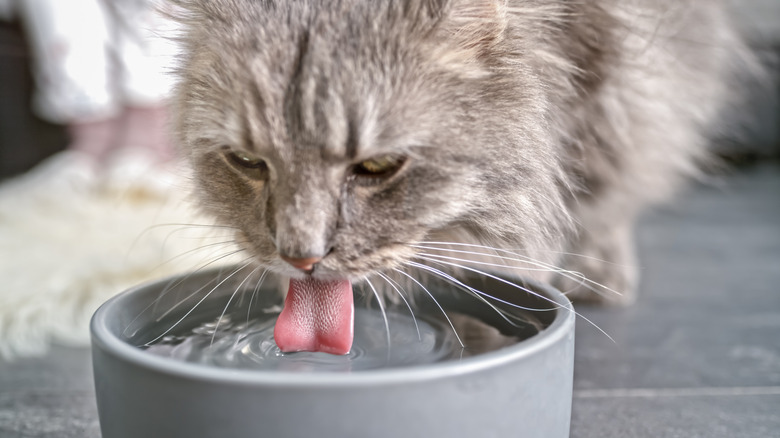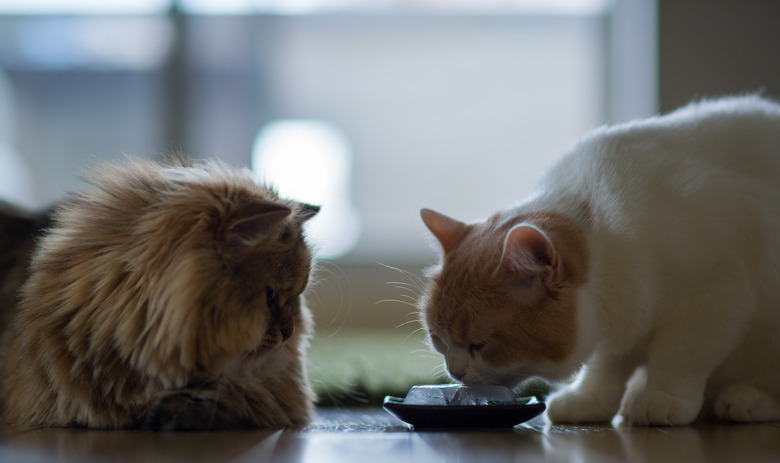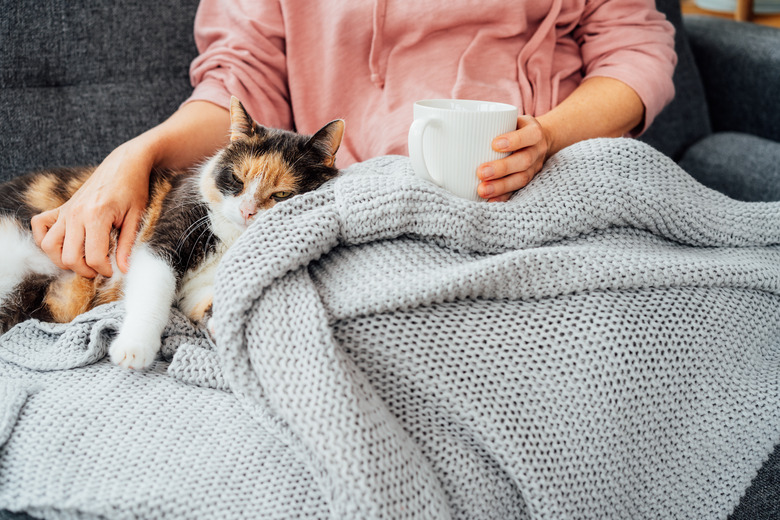Pedialyte For Cats: How To Give Pedialyte To Cats
Cats can be finicky about everything from their preferred sleeping spot to their favorite food. They can be especially picky about water, including when, how, and in what quantity they will drink it. In fact, many cats don't have sufficient water intake overall and need to be encouraged to increase their hydration. It's not just your cat being particular, though; they naturally have a lower thirst stimulus than other species. As carnivores, they evolved to receive most of their hydration via the moisture in prey.
This lower thirst stimulus can pose a problem, especially when a cat is ill, making them prone to dehydration. This is even truer for cats who only eat dry food. Because of this, it is important to know about ways you can encourage your cat to drink lots of fresh water and maintain proper hydration. Although you should always contact your veterinarian if you are concerned that your cat might be ill or dehydrated, you can safely use an over-the-counter electrolyte solution, like Pedialyte, in the meantime to try to help rehydrate them.
Signs of dehydration in cats
Signs of dehydration in cats
There are not always obvious signs of dehydration until it becomes a serious health issue. Diabetes or kidney disease can contribute to dehydration, and on the flip side, chronic dehydration in cats can increase their risk for kidney and urinary tract disease.
How can you tell if your cat is dehydrated? Gently grasp your cat's neck skin between their shoulder blades. Pull it up and away from their body and then release it. The sign of healthy hydration in a cat's body is good elasticity — skin that goes back to its original position quickly and easily. If your cat's skin "tents up" and stays in the pulled position rather than going back to normal, this indicates dehydration. By the time you can see skin tenting, your cat is already significantly dehydrated and needs to see a veterinarian as soon as possible. While this test (known as turgor) can be useful, it can be more informative to simply monitor your cat's daily water intake and consult your veterinarian if you notice any changes, including increased or decreased drinking.
If your cat is vomiting, has diarrhea, or has a loss of appetite, you should be vigilant for any signs of dehydration. If they are dehydrated, your cat might also be lethargic or have dry mouth or "tacky" gums, sunken eyes, and an increased heart rate.
Can you give Pedialyte to cats?
Can you give Pedialyte to cats?
Yes, plain, unflavored Pedialyte can be used to encourage fluid intake in dehydrated felines.
If you do decide to give your cat Pedialyte, use only small amounts of Pedialyte and only the unflavored version. It is also best to mix it with their regular water or their food (wet or dry) rather than giving it straight. If necessary, you can mix in tuna juice or clam juice to tempt your cat. Cats who enjoy licking ice cubes might like frozen Pedialyte as well. (Try this next time you experience hot weather and see if your cat likes it! It can also be fun to let your cat play with an ice cube on a non-carpeted floor.)
A dehydrated cat's electrolyte balance is likely to be disrupted. This means they might have too many or not enough important minerals, such as sodium, chloride, calcium, magnesium, and potassium. Electrolytes are crucial because the body needs them for many essential biological functions. Unlike plain water, Pedialyte includes certain electrolytes so it can help replenish these in dehydrated cats. Some cats also enjoy the taste of Pedialyte, meaning they might be more likely to drink it than plain water.
Pedialyte, which contains water, dextrose, sodium, and potassium, can also be a good choice for kittens and young cats experiencing mild dehydration due to diarrhea. If your cat has a chronic illness, such as kidney disease, you can put a few drops of Pedialyte in their water bowl for them to drink on a regular basis as a supplement to other supportive care.
Keep in mind that Pedialyte is only useful in cases of minor cat dehydration. If your cat is refusing to drink at all, is lethargic, or is experiencing frequent vomiting and diarrhea, you should seek veterinary attention right away. If you are not sure whether you should contact your veterinarian, the correct answer is to always contact your veterinarian.
How to increase hydration in cats
How to increase hydration in cats
In addition to Pedialyte, there are other ways to encourage and increase a cat's hydration, from tweaking their diet to changing up their water container.
- Feed canned cat food. Feeding mostly canned cat food is a good idea because wet food contains significantly more water than dry food. Some cats can actually get almost enough water from canned food.
- Change their water bowl. Figuring out what kind of water bowl your cat prefers can also make a dramatic difference in their fluid intake.
- Try a water fountain. Some cats enjoy drinking out of circulating water fountains.
- Change the material. Others might be partial to a certain type of bowl material, such as metal or porcelain.
- Mix with broth. Other cats may drink more water if it is flavored with low sodium chicken broth or tuna juice. Keep in mind that most sports drinks are not healthy for your cat, as they contain too much sugar. Your veterinarian might recommend a feline-specific supplement, such as Purina Hydra Care or Oralade.
Cats with severe dehydration or underlying health issues, like kidney disease, usually require additional supportive care to achieve an appropriate level of hydration. Some cats need regular subcutaneous fluids, or fluids injected under the skin. This can even be done at home after your veterinarian instructs you on the proper technique. If your cat has a disease, work with your veterinarian for the best plan to keep them hydrated.
The bottom line
The bottom line
Because of their unique evolution and physiology, even a healthy cat can be at risk of dehydration. Pedialyte is a safe option to help replenish your cat's fluids if they are mildly dehydrated. You can also try other strategies, such as a using a cat water fountain or feeding mostly wet food to increase your cat's hydration on a daily basis. However, if your cat is dehydrated due to an illness or chronic disease, don't take matters into your own hands. You should consult your veterinarian for a treatment plan.


